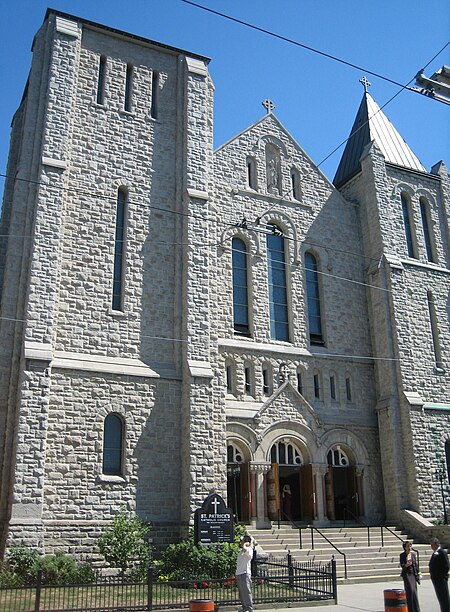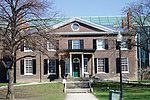St. Patrick's Church (Toronto)
1861 establishments in Canada20th-century Roman Catholic church buildings in CanadaRedemptorist churchesRoman Catholic Archdiocese of TorontoRoman Catholic churches completed in 1908 ... and 3 more
Roman Catholic churches in OntarioRoman Catholic churches in TorontoRoman Catholic national shrines in Canada

St. Patrick's Roman Catholic Church on McCaul Street in Toronto, Ontario, Canada, is the church for the city's fifth oldest Roman Catholic parish. St. Patrick subway station nearby and the adjacent St. Patrick Street were named after the church. St. Patrick's is the home of the Canadian National Shrine of Our Mother of Perpetual Help. The German-speaking Catholic community in Toronto holds services in the church as well.
Excerpt from the Wikipedia article St. Patrick's Church (Toronto) (License: CC BY-SA 3.0, Authors, Images).St. Patrick's Church (Toronto)
McCaul Street, Toronto
Geographical coordinates (GPS) Address Website External links Nearby Places Show on map
Geographical coordinates (GPS)
| Latitude | Longitude |
|---|---|
| N 43.654685 ° | E -79.391332 ° |
Address
St. Patrick's Catholic Church
McCaul Street 131
M5T 1W2 Toronto
Ontario, Canada
Open on Google Maps







